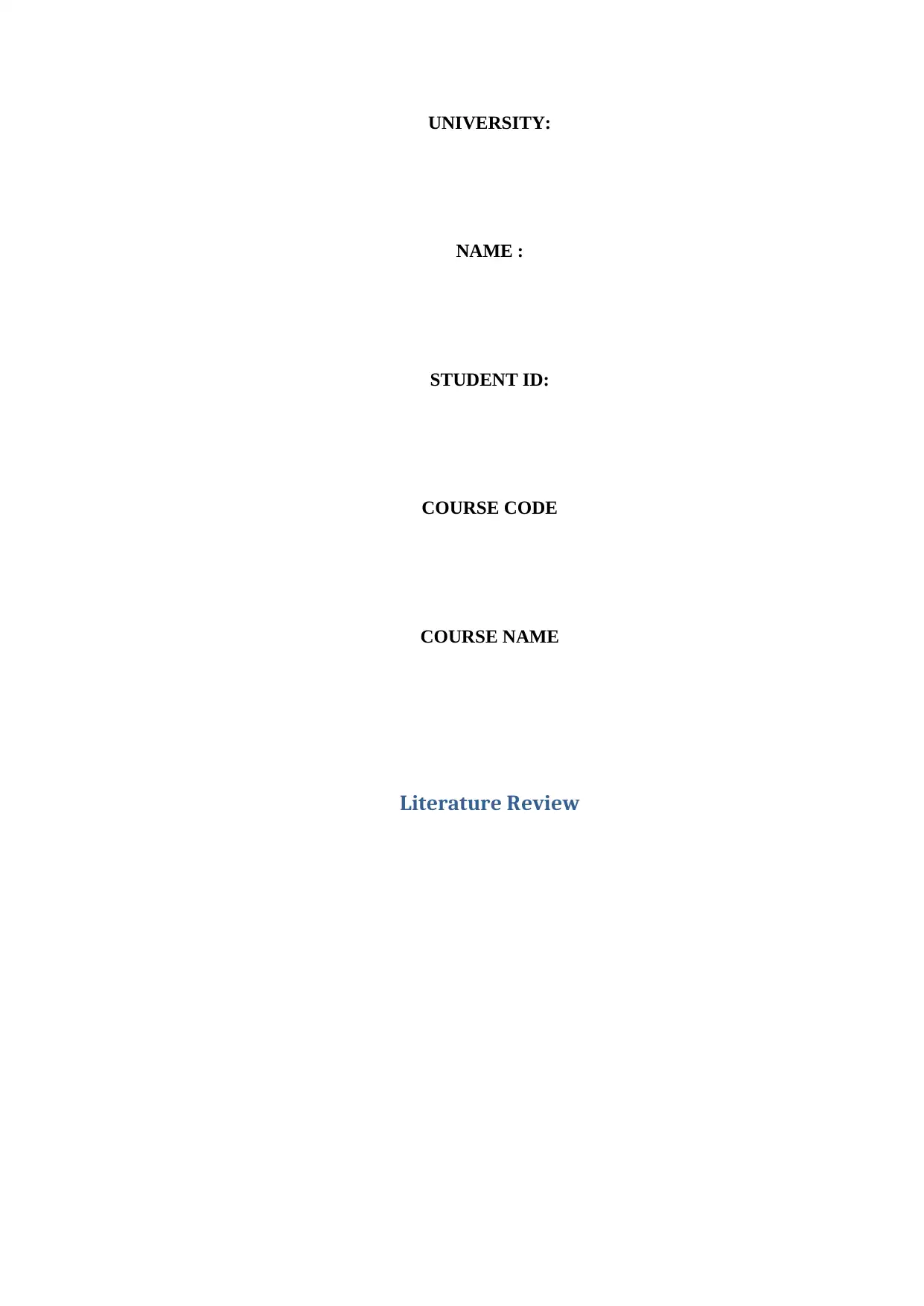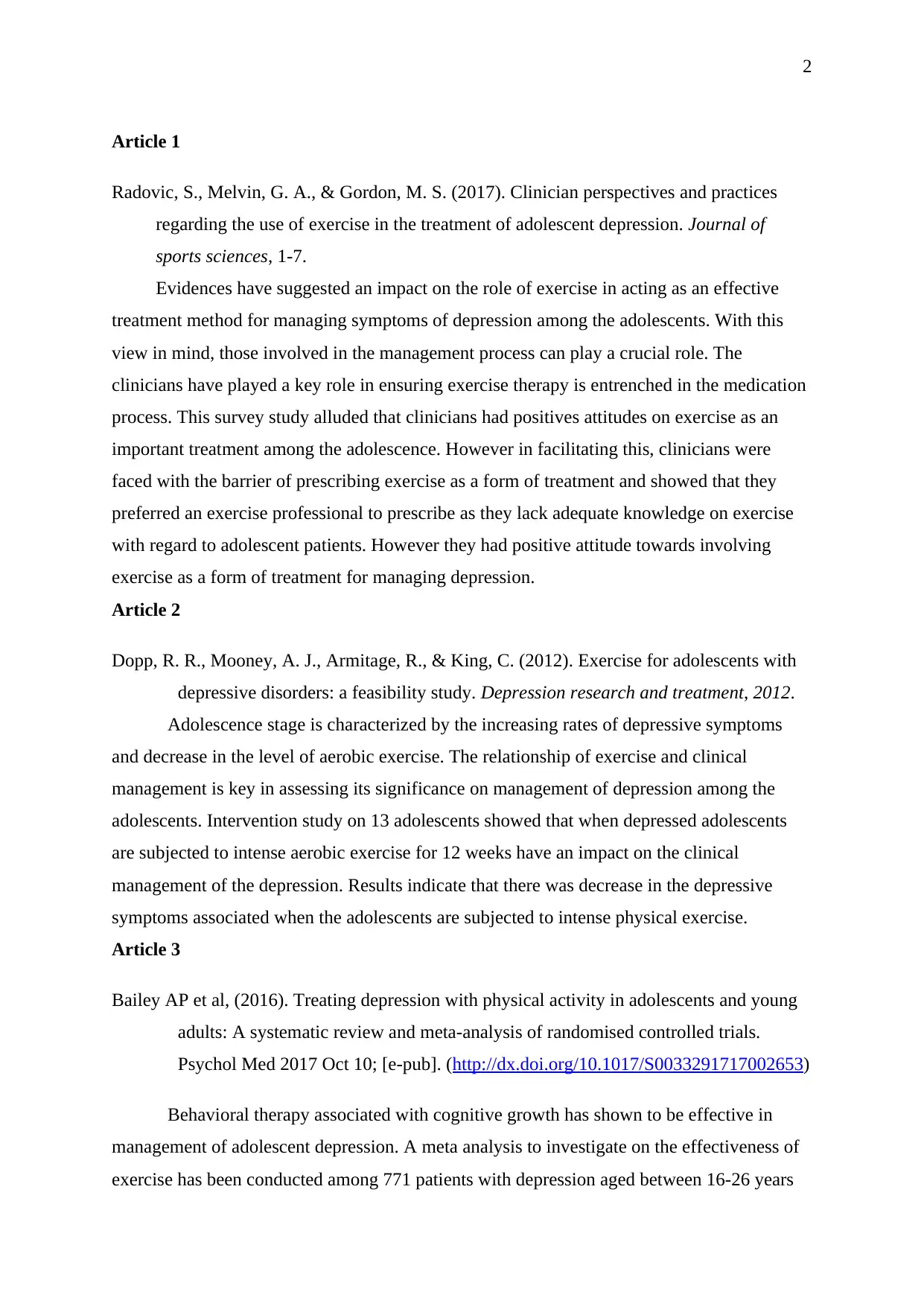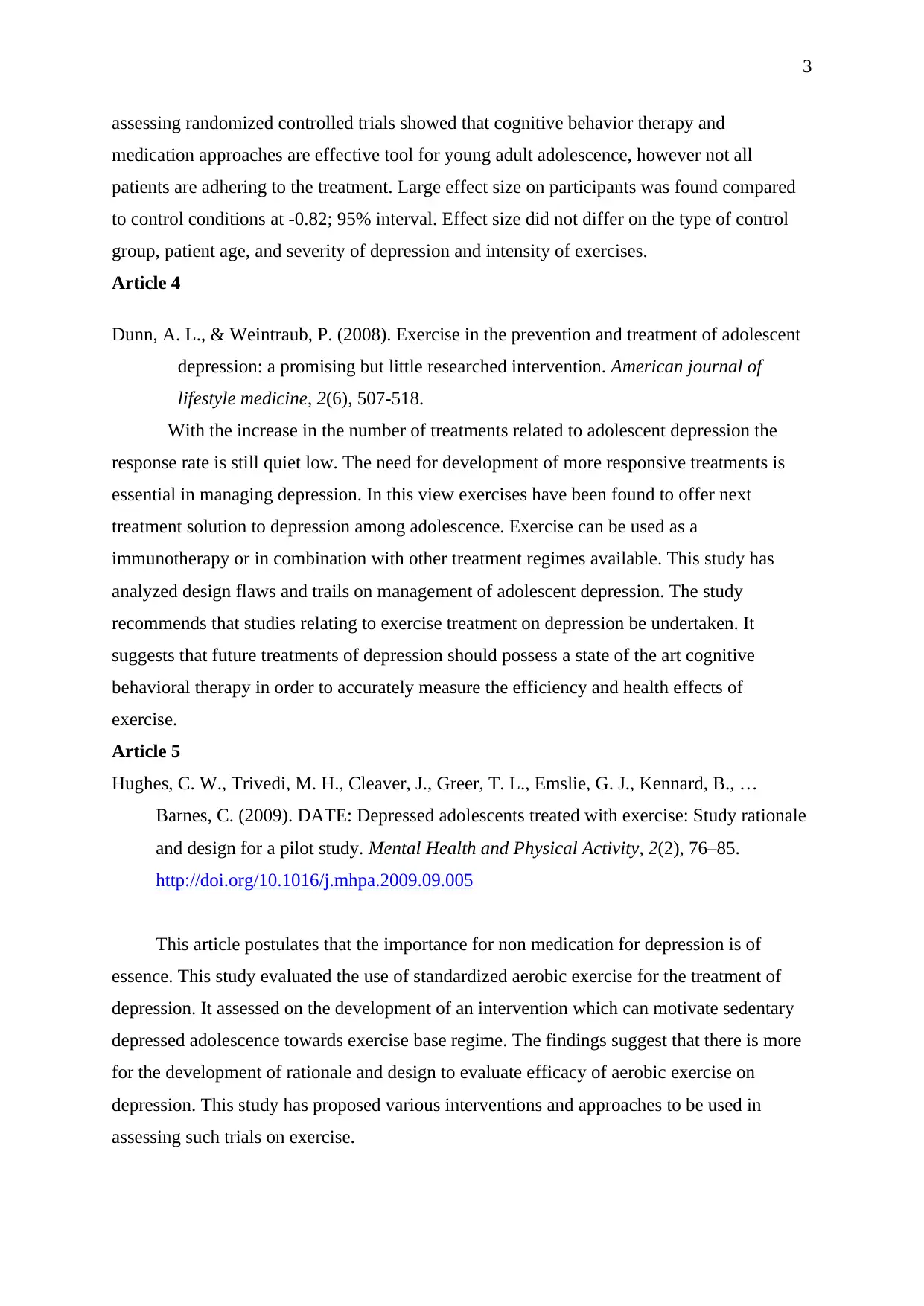Exercise as Treatment for Adolescent Depression: A Literature Review
VerifiedAdded on 2020/05/16
|3
|820
|53
Literature Review
AI Summary
This literature review synthesizes findings from five articles exploring the efficacy of exercise as a treatment for adolescent depression. The review highlights that clinicians generally hold positive attitudes towards exercise as a treatment modality, but often lack the specific exercise knowledge to prescribe it effectively. Studies, including intervention studies, indicate that intense aerobic exercise can reduce depressive symptoms in adolescents. Meta-analyses reveal that exercise, often in conjunction with cognitive behavioral therapy, yields significant positive outcomes. The articles also emphasize the need for further research, particularly regarding the design of exercise-based interventions and the assessment of their long-term effects. The review underscores the importance of non-medication approaches to managing depression and the potential of exercise as a valuable component of comprehensive treatment plans.
1 out of 3










![[object Object]](/_next/static/media/star-bottom.7253800d.svg)